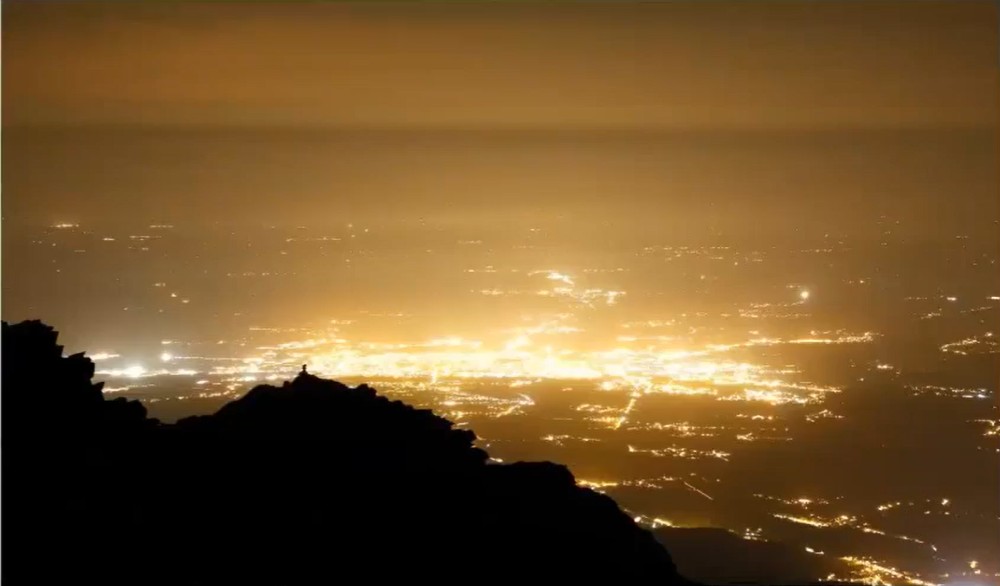
A talk at the recent virtual Castaic Area Town Council meeting about the effort to cut down on “light pollution” — which grows by 10% annually in L.A. County, according to the presentation — revealed a “real disconnect,” according to officials.
Rod Kaufman, chair of the light pollution committee of the Los Angeles Astronomical Association, described the new guidelines as an effort to reduce lighting with “excessive brightness that causes visual discomfort and can be a safety concern.”
There have been public displays of support for the effort from the office of L.A. County 5th District Supervisor Kathryn Barger, who represents plenty of rural communities in northern L.A. County covered by the county’s current lighting ordinance.
She authored an April 12, 2024, motion, which recognized the newly established nonprofit organization, Dark Sky LA County, for its work “to preserve natural darkness and diminish the impact of artificial light locally.”
Barger called light pollution a growing problem and praised Dark Sky as “our local steward of the night sky,” as a recognition of the annual International Dark Sky Week last year.
Then two months later, Kaufman’s astronomical association presented Barger with a plaque of gratitude for helping share information about light pollution via an “Eyes in the Skies” pamphlet, letting people know about the impacts.
“The efforts of Supervisor Barger that help reclaim our nighttime skies affect a large area of the county of Los Angeles, including the skies above the Santa Clarita Valley as well as Mount Wilson,” said a 2024 release from the association, which called the SCV “a gateway to the dark skies that beckon beyond in the nearby Los Padres National Forest.”
Kaufman, a longtime SCV resident, mentioned at the Sept. 17 town council meeting that 80% of people have lost visibility of the Milky Way, as well as many celestial objects, due to light pollution. That was part of why his group had worked with Barger’s office on proposals for a new Rural Outdoor Lighting District standard, he said.
The five-year, phased implementation had three primary objectives, according to Kaufman’s slides: to shield outdoor lighting from the sky; to minimize light trespass; and to have exterior business lights off by 10 p.m. unless motion sensor-operated, with complaint-based enforcement.
When Kaufman opened the talk for questions, there were cost and compliance questions, as well as questions about the source of the regulations.
Councilman Chris Dittes, who said he lives near Castaic Lake, frequently sees lights from there, as well as a nearby church with a light on top. Kaufman said based on the measurable light levels, there probably would need to be some changes made by local business during the gradual implementation. Addressing concerns about the 24-hour truck stops, he said there would be certain permitted exceptions.
Kaufman also said that motion-sensor technology was becoming cheaper and cheaper, and the cost of implementation could represent long-term savings versus the equipment cost.
Stephanie English, a representative from Barger’s office, said she wasn’t “deeply involved in this” but wanted to clarify the changes being discussed.
“Your plan extends beyond (the current Rural Outdoor Lighting District standards) … is that correct?” she asked.
“I do want to clarify,” Kaufman said. “When you say your plan, this was actually authored and provided by Supervisor Barger’s staff, by her office. We did not write this … yes, we provided significant input to it, but it’s not our plan.”
English said she recalled conversations about a month or two prior, but she wanted to make sure the plan presented was the one the county had approved.
Kaufman said it was, and that’s why he was presenting it next month to the Topanga area’s town council, also in an effort to garner support.
“Collectively, we would like to have this presented to the (Department of Regional Planning) for further action,” Kaufman said. “Our understanding is that it may be incorporated into their elements project, their environmental project. So, we’re hoping that this will be prioritized within that — the more support we have to do this from the councils, the greater the likelihood that that will happen.”
Town Council President Bob Lewis said he’d like to get more clarity on the state of the discussion before the council takes up a formal vote on the proposal.
An email sent Tuesday to The Signal indicated that while compliance was a goal, L.A. County officials currently lack the budgetary means for any additional enforcement measures.
“The county’s goal is, of course, for residents to comply with the standards in the Zoning Ordinance; however, we unfortunately do not have the staff to enforce them proactively, which is why we rely on complaints,” according to an email from Alex Garcia, the assistant deputy director for the county’s land use regulation division.
“We currently do not have a lighting consultant who can provide training or assist with enforcement,” the email continued, noting there was a staff discussion a few years ago that “was never prioritized.”
“We have responded to complaints regarding lighting issues, but not to the extent required by the zoning code due to a lack of training,” he added. “Given the current state of the budget, I do not anticipate this becoming a departmental priority. We should discuss this further in case the issue arises again.”



